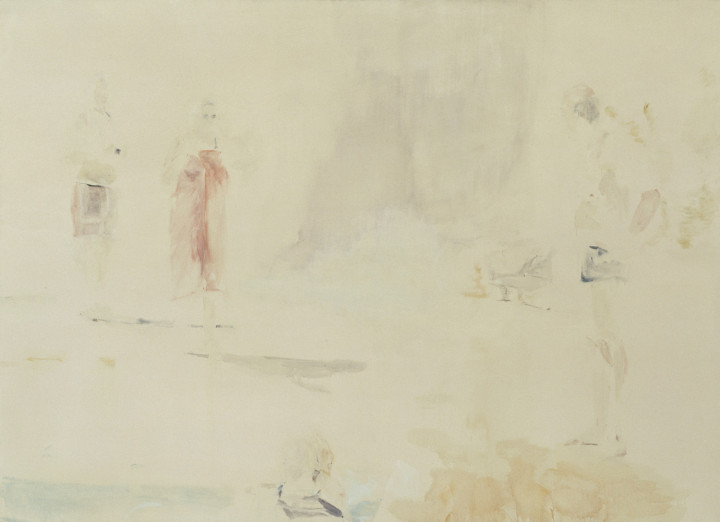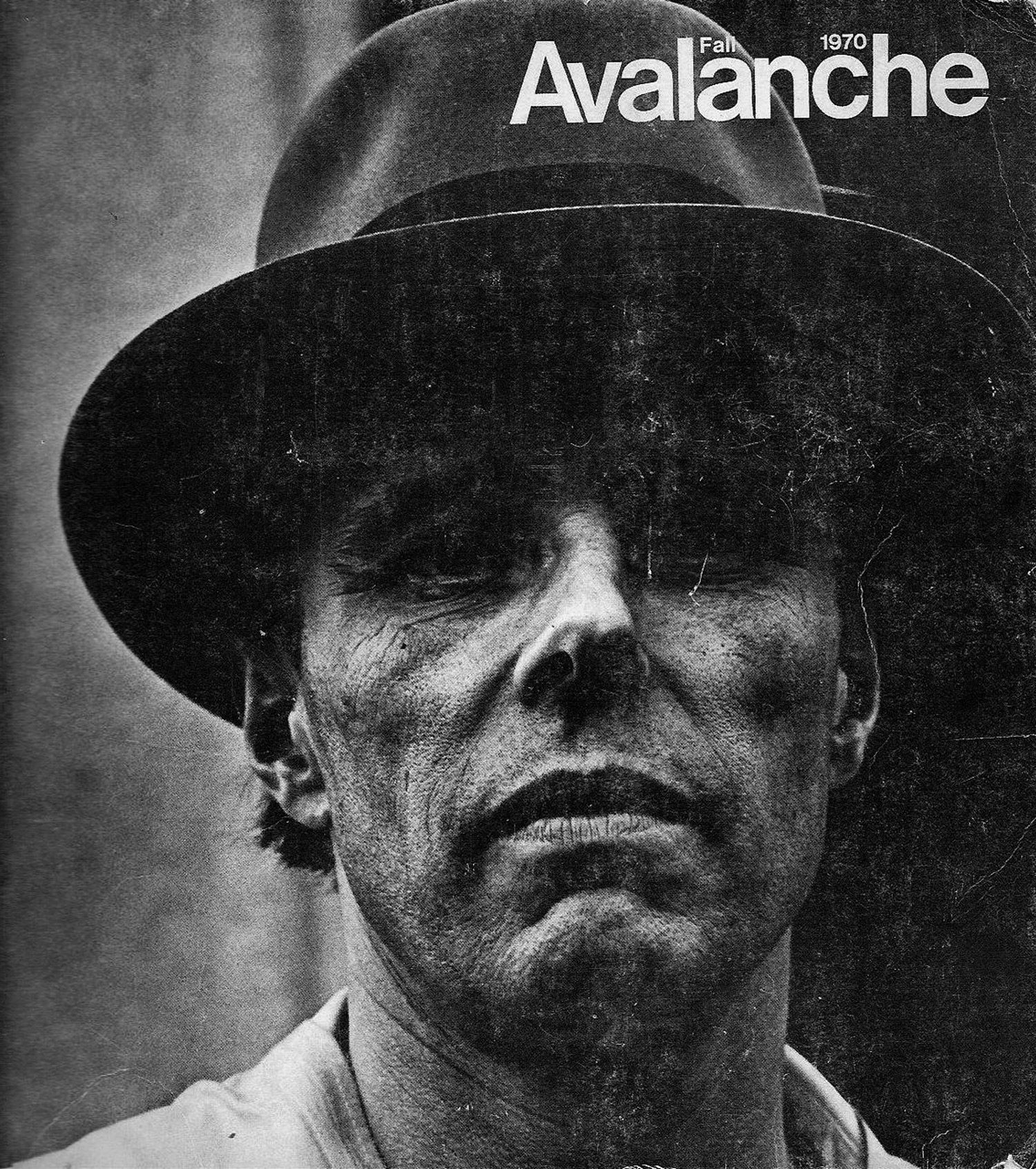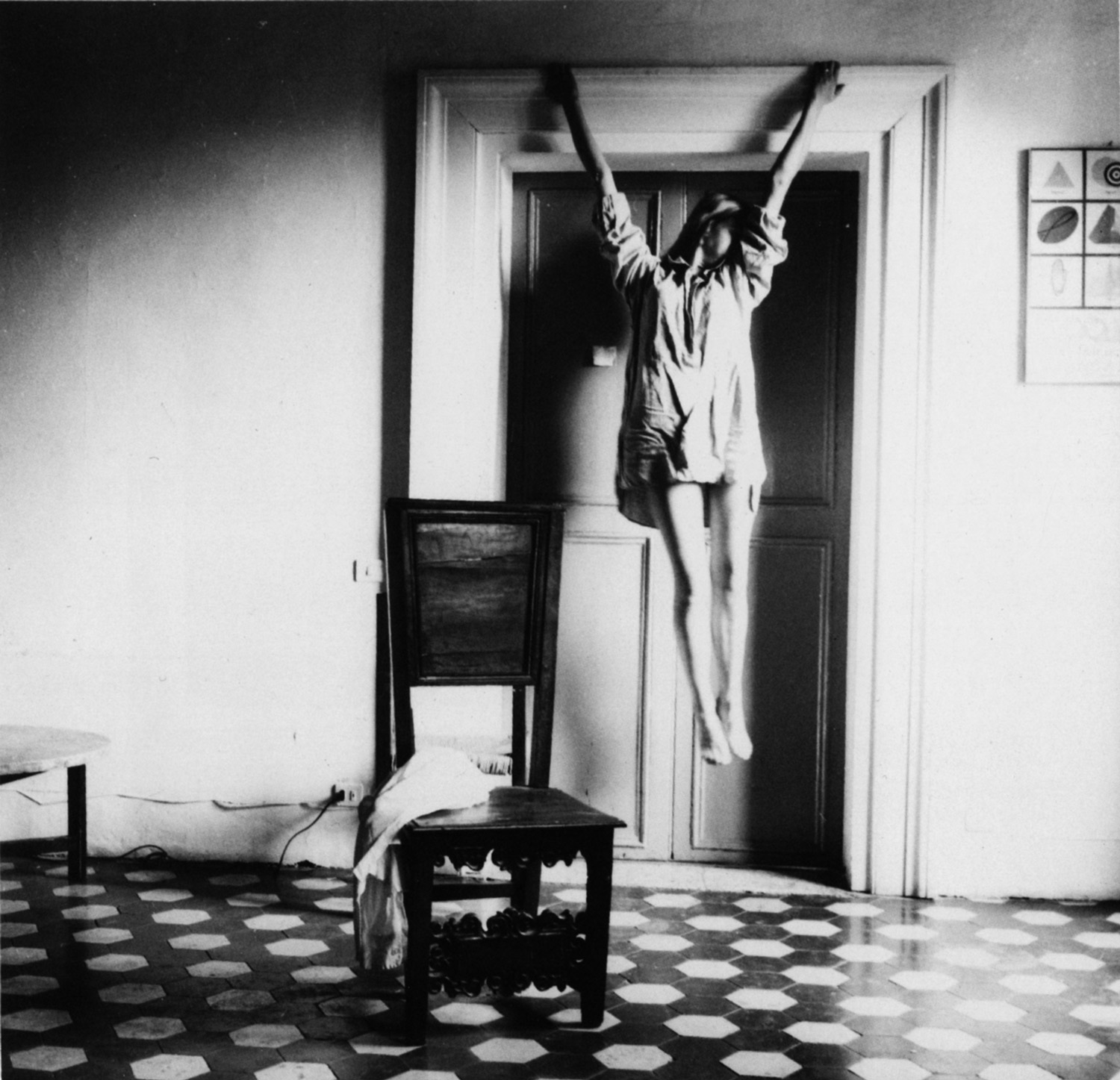
In the mid-1990s, N.E. Thing Enterprises published a series of books called “Magic Eye.” The books were collections of stereograms, two-dimensional images that trick the observer into perceiving a three-dimensional scene or object by disrupting the conventional coordination between focus and convergence. These hidden pictures proved incredibly popular: Magic Eye I, II and III were in The New York Times bestseller list for 34 consecutive weeks, and, together with the rest of the “Magic Eye” books (featuring from Garfield and Looney Toons to Spiderman and Nostradamus), they have sold 25 million copies worldwide.
In order to perceive the three-dimensional element within the stereogram, the viewer needs to either make both her eyes adopt a relatively divergent angle (wall-eyed view) or a relatively convergent one (cross-eyed view). This is easy to do for some people: a few seconds, and the image is deciphered. For others, it proves impossible: no matter how long they look, whatever is supposed to take place doesn’t. This inability to lose focus could be seen as the result of a lack of training, but also, and more interestingly, as an excess of competence: they are actually too well trained to look at things the way they are supposed to.
Something similar happens with Maaike Schoorel’s work. Her paintings are medium- and large-size oils on canvas, painted in very subtle pastel colors. She applies a light wash to each canvas, sometimes white, sometimes pink, sometimes yellow, always very even and extremely pale. The surfaces are then left largely ‘empty,’ except for a few marks, also in light tones, that she applies in several layers and places in different sections of the canvas. And like the “Magic Eye” images, these marks are easily identified by some viewers as part of some sort of figurative composition, while, for others, they are just areas of different color and texture, perhaps suggesting, but never fixing, a figure. These two responses reveal alternative attitudes (or alternative levels of ‘training’) within the viewers in relation to painting and what is expected from it. The biggest merit of Schoorel’s paintings is perhaps eliciting both without sanctioning either.
Seen from the perspective of the process, the conclusion could be the opposite. Schoorel paints from photographs. She uses images of her friends or family and other unrelated topics, always on the basis of specific pictorial concerns. Through the selection of the photographs, and in some cases through a process of cropping or assemblage of pictures, she works out the composition of the image. From there, she chooses her marks, which outline part of a figure, a shadow, a color or a tonality.
So, if the marks are the remains of a photographic image, the result of a process of reduction of figures, it would seem legitimate to approach Schoorel’s paintings as coded messages, perhaps the result of a failed attempt to reproduce an image. The role of the viewer would then be to reverse that process: starting from the incomplete information provided by the marks on the canvas, trace back the figure they outline and the scene they belong to.

The problem with this hypothesis is that the radical reduction process she applies to the image goes to the extreme of disrupting the hierarchy between mark and figure. The marks can be used to reconstruct the figure, but are no longer a function of it; they are, somehow, freed from it. In this sense, Schoorel’s practice aligns itself not with the figurative work of Gerhard Richter, but with that of Luc Tuymans — not in terms of style, but in the sense that Tuymans’s paintings constitute an attempt to liberate the painterly mark from the still life (or gas chamber) depicted in the canvas. Unlike Tuymans, though, there is in Schoorel’s paintings an absence of clear figures. The mark, disengaged from the wider semantic structure of the figure, is allowed to stand on its own, in relation to the other marks and to the empty space around and between them. This may suggest a comparison with the work of Cy Twombly. In Twombly’s paintings, each of the marks makes a claim to sense. Their loose, free form can be read formally or in terms of texture, but they always imply meaning, either as the artist’s expression or by evoking something from the outside. In Twombly, the marks have the same function as the words that sometimes accompany them: they don’t intend to communicate direct, distinct meaning; they promise an inexhaustible pool of it. In Schoorel, in contrast, the marks lack that looseness and, more importantly, that expressive or evocative quality. Somehow, they manage to be at the same time the trace of a figure and arabesque.
Because of this, they appear as the perfect embodiment of Kant’s assessment in the Critique of Judgement: “That something is art and yet seems only to be contingency, as nature as yet seems to be art, [in this] lies the pleasure.” For Kant, art must look like nature, it must appear not to have any purpose or meaning. That implies an imperative of contingency: the marks in a painting, like those in Schoorel’s, are just ‘any’ marks. For Kant, the production of this type of contingency is the role of the genius’s productive imagination. The difficulty is that, if left unchecked, the genius tends toward the abandonment of all order and, ultimately, toward nonsense. The function of taste is to balance this tendency to disorder.
For Schlegel, imagination is not to be feared: “this is the beginning of all poetry, to cancel the progression and laws of rationally thinking reason, and to transplant us once again into the beautiful confusion of imagination, into the original chaos of human nature.” The arabesque is “the original form of painting,” “the embryo of all modern painting” and “the oldest and original form of human fantasy.” According to fellow Romantic Ludwig Tieck, ‘ideal’ paintings “like to renounce plot, passion, composition and everything” and delight solely by their “dazzling colors without coherence.” For both, the suspension of meaning is a condition of art.
It would be inaccurate to say that Maaike Schoorel’s paintings are an illustration of Tieck’s words. The origin of the paintings, and the fact that the original image can actually be traced back, suggest composition and perhaps plot. However, they simultaneously open themselves up completely to the viewer, and welcome her/him without any narrative concern, causing delight in the mere contemplation of colors and textures. In this sense, Schoorel’s paintings are the perfect illustration of some other words Tieck wrote: “No one can prescribe to me how and what I am to read.” By freeing the marks from the figure, she has also freed the paintings from any specific reading, emancipated them from the constraint of meaning. Because of that, she has produced something very close to what Schlegel and Tieck considered genuine art.





